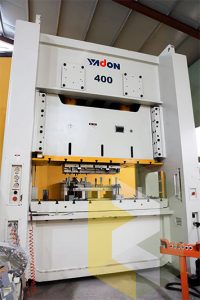While lathe machining can make a wide variety of accessories and some of the same characteristics of the mouxing, there are many different components that need to be taken into account when adjusting a lathe for a metal spinning operation. While not all lathes may need to be reconfigured, some common lathe components involved in metal spinning include:
Design of lathe
- Bed: Lathe body is the horizontal or vertical beam that supports the tool device at both ends of the machine tool. When applied to metal spinning, it is used only as a base for the main axle box and tail frame.
- Headstock: The headstock is located at one end of the bed and is essentially a frame for holding the lathe spindle and a series of rotating shaft bearings
- Tailstock: The tailstock is located at the other end of the bed and is aligned with the headstock. It contains a clamping device that holds the metal disc parallel to the bed and presses it against the workpiece during the manufacturing process.
- Spindle: The spindle is responsible for holding and rotating the workpiece during operation. It consists of a spindle attached to a rotating bearing and a backplane which, when adapted to metal spinning, holds the workpiece in place to prevent it from moving during the manufacturing process.
- Power system: This is the unit that drives the rotational force and tool components in the lathe. It is usually measured in RPM(revolutions per minute) and horsepower of the motor.







